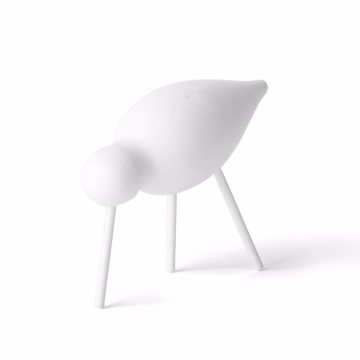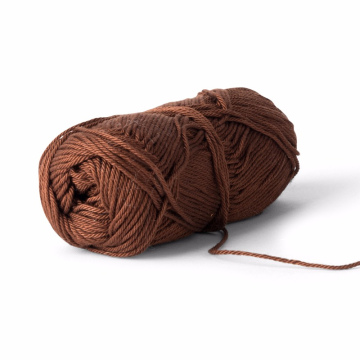A Culinary Adventure: Enjoying the Perfect Kung Pao Chicken
The Origins of Kung Pao Chicken
Kung Pao Chicken is a dish steeped in rich history, tracing its roots back to the Qing dynasty in China. The origins of this iconic stir-fried dish are closely associated with a Qing official named Ding Baozhen, who served as the governor of Sichuan province in the 19th century. It is believed that the dish was originally created in his household and was named 'Gong Bao' in classical Chinese, which translates to 'palace guardian.' This nomenclature reflects Ding’s high-ranking status and his connection to the culinary traditions of Sichuan province.
The original recipe of Kung Pao Chicken featured diced chicken marinated in soy sauce, tossed with various vegetables, peanuts, and an array of spices. Over time, this dish has evolved, with variations emerging from different regions of China. In Sichuan, for instance, the use of Sichuan peppercorns enhances the dish with a unique numbing and spicy flavor, setting it apart from other chicken dishes. Meanwhile, coastal regions adapted the recipe by incorporating local ingredients, which led to a distinct flavor profile while maintaining the essence of the original dish.
As the culinary journey of Kung Pao Chicken progressed, it began to make its way beyond China’s borders. The dish gained popularity in Western cuisines, particularly in Chinese-American restaurants, where it underwent further modifications. In these adaptations, additional ingredients such as bell peppers and carrots were sometimes introduced, altering the texture and appearance of the traditional recipe. Despite such variations, the fundamental components—chicken, peanuts, and heat—have remained consistent, preserving the dish’s identity across cultures. Kung Pao Chicken represents not just a culinary delight but a historical narrative that continues to evolve.
Exploring the Flavors: Key Ingredients and Preparation
Kung Pao Chicken is a celebrated dish in Chinese cuisine that offers an exciting interplay of flavors and textures. At its core, the dish features a main ingredient: chicken. Typically, bite-sized chunks of boneless, skinless chicken breast or thigh are used, marinated to enhance their tender, juicy character. This marination often involves soy sauce, which introduces a savory depth, and cornstarch, which aids in achieving a velvety texture upon cooking.
Another key element in Kung Pao Chicken is peanuts. These nuts not only add a delightful crunch but also enrich the dish with a subtle nuttiness that perfectly complements the spicy and salty aspects. For authentic Kung Pao Chicken, it's best to use unsalted and roasted peanuts, as their flavor profile harmonizes beautifully with the dish's sauce.
Chili peppers are crucial for delivering the signature heat. Dried red chili peppers are frequently used, and their amount can be adjusted according to personal preference, allowing for a tailored spice level. Furthermore, the inclusion of fresh Sichuan peppercorns introduces a unique, tongue-tingling sensation, making the dish a true expression of Chinese culinary artistry.
The preparation techniques significantly influence the overall flavor balance. Stir-frying is the preferred method, as it facilitates quick cooking at high temperatures, ensuring that the ingredients retain their distinct qualities. It is equally important to pair soy sauce with other flavor enhancers such as rice vinegar, sugar, and hoisin sauce, creating a well-rounded sauce that coats the chicken and vegetables effectively.
When seeking authentic ingredients, it is advisable to visit Asian grocery stores, where a wider variety of specialty items, including fresh chilies and Sichuan peppercorns, can be sourced. Experimenting with variations such as adding vegetables or adjusting spice levels allows for a personalized touch to this iconic dish, ensuring that each culinary adventure remains unique.
Where to Find the Best Kung Pao Chicken
When it comes to indulging in authentic Kung Pao Chicken, the search for the perfect dish often leads to both renowned restaurants in China and international eateries that specialize in Chinese cuisine. One of the most celebrated places to savor this iconic dish is in its birthplace, Szechuan Province, China. Here, one must visit restaurants such as Chen Mapo Tofu in Chengdu, which is famous not only for its Mapo Tofu but also offers an exemplary version of Kung Pao Chicken made with fresh ingredients and traditional methods.
Beyond the borders of China, major cities like San Francisco, New York, and London boast exceptional Chinese restaurants where Kung Pao Chicken is featured prominently on the menu. In San Francisco’s Chinatown, for instance, the famed restaurant, R&G Lounge, serves a delightful rendition that perfectly balances the flavors of Sichuan peppercorns and roasted peanuts, giving diners an authentic culinary experience.
For diners in New York City, Xi'an Famous Foods is a spot where the bold flavors of Kung Pao Chicken come alive, complemented by a modern twist that reflects the city’s eclectic food scene. Meanwhile, in London, Hunan offers a tantalizing variety of Kung Pao dishes, utilizing high-quality ingredients and showcasing refined culinary techniques.
In addition to dining locations, insights from local food bloggers and chefs about the quality of Kung Pao Chicken are invaluable. They often emphasize the importance of ingredients, such as the use of fresh chicken, proper marination, and the incorporation of traditional spices. Paying close attention to the presentation of the dish, which often highlights vibrant colors and textures, can also indicate the authenticity and care taken during preparation.
With numerous options available globally, food enthusiasts can embark on a culinary adventure to find the most delectable Kung Pao Chicken in both its traditional and modern interpretations.
A Culinary Experience: Pairing and Serving Suggestions
Enhancing your Kung Pao Chicken experience involves careful selection of complementary dishes, beverages, and even desserts. When considering side dishes, steamed jasmine rice is an ideal pairing, as the mild flavor acts as a canvas, allowing the bold characteristics of the Kung Pao Chicken to shine. Alternatively, vegetable fried rice adds an enjoyable texture and sweetness that balances the spicy notes of the dish. For a more substantial meal, you may also consider serving stir-fried bok choy or a fresh cucumber salad, which introduces a refreshing crunch that contrasts beautifully with the richness of the chicken.
When it comes to beverages, a crisp, chilled Riesling or a light-bodied Sauvignon Blanc can enhance the dining experience. These wines possess a sweetness and acidity that complement the heat from the dish. For those preferring non-alcoholic options, an unsweetened iced tea infused with lemon or a ginger ale provides a pleasant counterpoint to the spiciness of Kung Pao Chicken. Additionally, traditional Chinese herbal teas can elevate the meal, introducing flavors that soothe the palate.
To elevate your serving presentation, consider using a stylish platter or individual bowls for a more elegant display. Garnishing the Kung Pao Chicken with freshly chopped green onions, cilantro, or sesame seeds not only adds visual appeal but also introduces layers of flavor. Creating an interactive dining experience can further enhance enjoyment; providing diners with their own bowls of cashews or peanuts allows them to customize their plate and engage with the dish more personally.
In terms of cultural practices, sharing dishes among diners is a common practice in Chinese cuisine, fostering a sense of community and enjoyment. Encouraging guests to serve themselves can create a more relaxed atmosphere, making the meal not just a culinary experience but also a social one, further heightening the overall enjoyment of Kung Pao Chicken.





